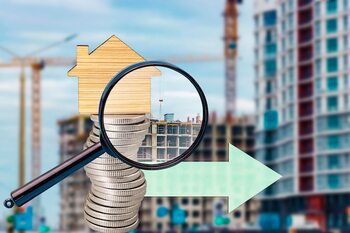The value of neighborhood trends in real estate appreciation

The value of neighborhood trends in real estate appreciation is a key aspect that buyers and investors must understand. Location not only determines the price of a property but also influences its long-term appreciation potential. By considering factors such as safety, nearby services, and urban development, one can anticipate how neighborhood dynamics will affect the investment. In this article, we will explore how these trends can become strategic allies to maximize real estate appreciation and secure a prosperous financial future.
The importance of the social environment in property valuation
The social environment plays a crucial role in property valuation, as the quality of life offered by a neighborhood can be a significant determinant for buyers. The perception of safety, access to services, and proximity to recreational spaces are elements that contribute to creating an attractive community. Neighbors and their interaction also influence how an area is perceived: areas with strong social cohesion tend to have a higher value due to the desire to live in environments where interpersonal relationships are positive and enriching. This dynamic not only affects the initial appeal but can also drive property appreciation as demand increases.
Furthermore, urban development and local policies play a fundamental role in transforming the social environment. Projects such as new infrastructure, shopping centers, or improvements in public transportation can make a neighborhood more attractive, which directly impacts its property value. On the other hand, negative changes such as increased crime or the deterioration of public services can significantly decrease real estate value. Therefore, understanding these social trends is essential for any buyer or investor looking to maximize their investment and ensure long-term profitability. By staying informed about the sociocultural and economic dynamics of the area, interested parties can make more informed decisions in their acquisitions.
2. How new developments affect neighborhood appreciation
New developments in a neighborhood have a direct and significant impact on the appreciation of surrounding properties. For example, the construction of modern commercial facilities, parks, or cultural centers can revitalize a previously neglected area, attracting more residents and increasing the demand for housing. This phenomenon results in an increase in real estate value, as buyers seek locations that offer not only convenience but also an attractive and dynamic environment. Additionally, the arrival of investments in infrastructure, such as improvements in public transportation or the creation of new roads, facilitates access to the area and enhances quality of life, which is also a determining factor in assessing appreciation.
Additionally, it is important to consider how these developments can influence the perception of the neighborhood among potential buyers. A community that experiences growth and modernization tends to attract young people and professionals looking for vibrant environments to live in. This creates a domino effect: as more people become interested in the area, property values begin to rise. On the other hand, if these developments are not managed properly—such as if sufficient infrastructure for the population increase is not considered—they could lead to congestion and other urban problems that could depreciate real estate value. Therefore, understanding how these factors interact is crucial for any investor or buyer looking to maximize their return on investment in real estate.
3. Demographic trends and their impact on the real estate market
Demographic trends play a crucial role in shaping the real estate market, as they reflect changes in the population that can directly influence the demand for housing. For example, the increase in the young and professional population in urban areas has led to a rise in demand for apartments and smaller homes near workplaces and entertainment centers. At the same time, the aging population has created a greater need for housing adapted for older adults, as well as communities that offer specialized services. These demographic changes not only affect current prices but also project how communities will develop in the future.
Migration patterns are another determining factor in the real estate market. The arrival of new residents to a region can revitalize previously stagnant neighborhoods, increasing their appeal and value. When specific groups move to certain areas, they tend to seek particular features such as good schools, green spaces, or easy access to public transportation. This not only transforms the neighborhood's dynamics but can also drive local investments in infrastructure and commerce, which is essential for maintaining sustained growth in property appreciation. Consequently, understanding these demographic trends allows buyers and investors to anticipate market movements and make more informed decisions about their future acquisitions.
4. The relationship between public services and property valuation
The relationship between public services and property valuation is a determining factor in the analysis of real estate appreciation. Properties located in areas with access to essential services, such as potable water, electricity, sewage, and public transportation, tend to maintain or increase their value over time. This is because these services not only improve the quality of life for residents but also attract new buyers and investors interested in well-connected and functional areas. Consequently, a neighborhood with adequate infrastructure becomes a magnet for those looking to settle down, which increases demand and, therefore, property values.
In addition to basic services, other elements such as high-speed internet connectivity and the availability of recreational spaces also play an important role in real estate valuation. In an increasingly digital world, having fast and efficient access to the internet has become essential for many homes and businesses. Likewise, areas that offer parks, community centers, and other recreational facilities tend to be more attractive to young families. When evaluating a property from this comprehensive perspective of public services and nearby amenities, both buyers and investors can make more informed and strategic decisions that maximize their return on investment in the future.
5. Strategies to identify neighborhoods with high growth potential
Identifying neighborhoods with high growth potential requires a strategic approach and a good dose of research. One of the first steps is to analyze demographic trends, such as the increase in the young population or the arrival of families. These groups tend to seek areas that offer a good quality of life, access to services, and job opportunities. By observing the migratory flow to certain areas, one can anticipate an increase in housing demand, which is a clear indicator of future appreciation. Additionally, it is crucial to investigate what infrastructure projects are being developed or planned in the region, as these improvements can radically transform the neighborhood's appeal.
Another essential aspect to identify promising neighborhoods is to evaluate the evolution of the local real estate market. Analyzing historical appreciation rates and current prices in comparison to other nearby areas can provide valuable insights into whether a neighborhood is undervalued or if it has already reached its maximum potential. Additionally, paying attention to indicators such as the increase in commercial offerings, new schools, or recreational centers can reveal economic interests pointing to sustained growth. Finally, participating in community forums and local social networks allows for capturing opinions and perceptions about the neighborhood, complementing a more technical analysis with real experiences that also influence real estate appreciation.
6. The role of infrastructure in increasing real estate value
Infrastructure plays a fundamental role in increasing real estate value, as it determines the connectivity and accessibility of an area. Projects such as new roads, efficient public transport, parks, and recreational spaces not only improve the quality of life for residents but also attract new buyers and investors. As these infrastructures are developed, areas previously considered peripheral can transform into desirable places to live, thus significantly boosting their appreciation. The perception of a location changes dramatically when infrastructure improvements are implemented, which can result in a direct increase in property values.
Additionally, proper urban planning and sustainable development are factors that further enhance this positive effect on real estate value. Neighborhoods that have access to basic services such as education, health, and commerce are not only attractive to families but also create a favorable environment for long-term investments. In this sense, public policies aimed at urban development play a crucial role; by promoting the creation of well-planned and sustainable environments, it ensures not only an increase in demand from buyers but also a continuous improvement in neighborhood quality. Therefore, understanding how infrastructure affects the real estate market is essential for anyone interested in maximizing their investment.
7. Success stories: Neighborhoods that have seen a notable increase in their property value
One of the most notable examples of a neighborhood that has seen a significant increase in its property value is the Williamsburg area in Brooklyn. This community, which used to be considered an industrial and unattractive zone, has undergone a radical transformation due to the arrival of new residential developments and cultural spaces. The investment in infrastructure, along with the opening of restaurants, art galleries, and recreational spaces, has attracted young professionals and families seeking a vibrant and accessible environment. As a result, housing prices have increased considerably, demonstrating how neighborhood trends can positively influence real estate valuation.
Another emblematic case is the neighborhood of La Condesa in Mexico City. Formerly a neglected area, it has resurfaced as one of the most desirable places to live due to its diverse cultural offerings and proximity to important transportation routes. The improvement in security and the increase in local commerce have led both investors and buyers to seek properties in this location. This phenomenon has not only benefited current homeowners but has also created a domino effect in surrounding neighborhoods by attracting new investments and projects that continue to raise real estate value. These examples illustrate how neighborhood dynamics can become key elements for financial success in the real estate sector.



